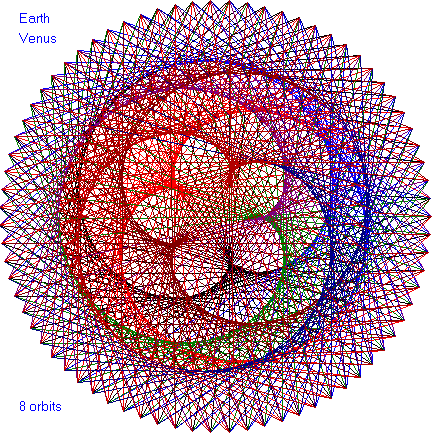
Harmonic Spheres and the Music of the Cosmos
In the 6th century BC, Pythagoras developed the science of harmonics. Legend has it that he was inspired by the sounds emanating from a blacksmith’s shop; producing experimental music with hammers and anvils, Pythagoras realized that the relationship between different musical notes can be expressed in the form of simple mathematical ratios.
Pythagoras saw in this a fundamental theory of the universe, and redefined the world – from the motion of celestial bodies to the emotional fluctuations in a human body – as iterations of a kind of cosmic music. More than a millennium later, Johannes Kepler interpreted this musica universalis as proof of Divine splendor, and devoted his career to a description of the geometric and harmonic order of our solar system.
Efforts to chart this celestial harmony can produce strikingly aesthetic images. Kepler’s sketches proved as much in his publications – as does this work by software developer Howard Arrington. Arrington used his own Ensign software to visualize the relationship between pairs of planets, producing a series of intriguing geometric mosaics. Better yet, he shares the program with which he created his images, so that you, too, can capture the music of the cosmos.
Join our newsletter for the latest in long-term thinking
Subscribe